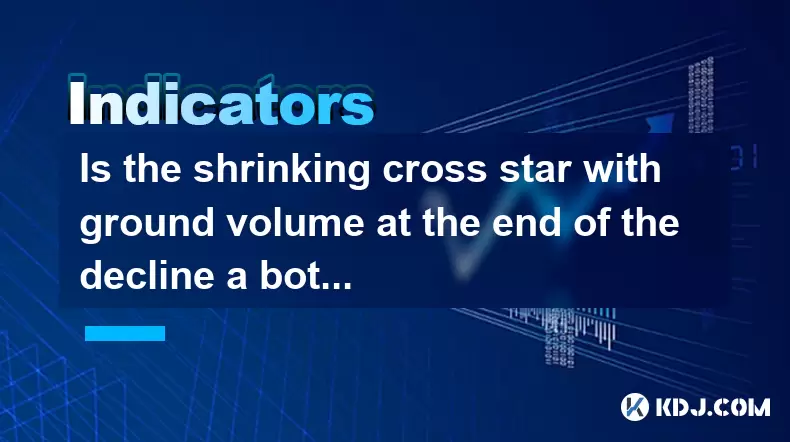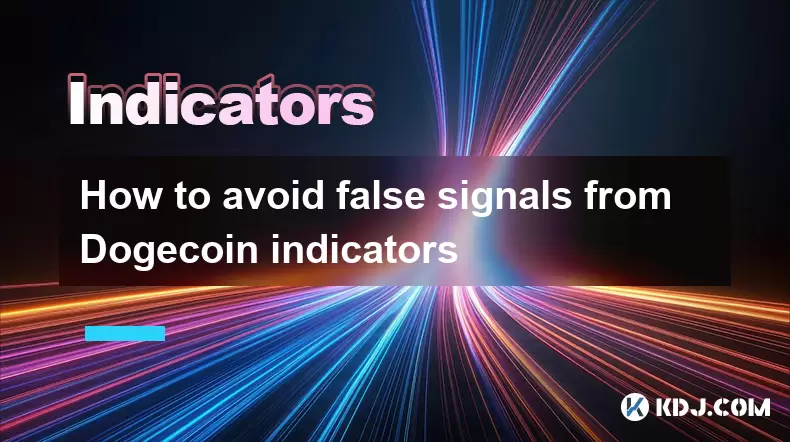-
 Bitcoin
Bitcoin $108,250.0992
0.11% -
 Ethereum
Ethereum $2,515.9404
0.03% -
 Tether USDt
Tether USDt $1.0003
0.00% -
 XRP
XRP $2.2166
-0.19% -
 BNB
BNB $656.5904
0.29% -
 Solana
Solana $147.4122
-0.58% -
 USDC
USDC $1.0000
-0.01% -
 TRON
TRON $0.2830
0.06% -
 Dogecoin
Dogecoin $0.1641
0.27% -
 Cardano
Cardano $0.5739
-0.19% -
 Hyperliquid
Hyperliquid $39.1463
-0.11% -
 Sui
Sui $2.8882
-0.02% -
 Bitcoin Cash
Bitcoin Cash $487.6428
0.31% -
 Chainlink
Chainlink $13.2097
0.07% -
 UNUS SED LEO
UNUS SED LEO $9.0308
0.10% -
 Avalanche
Avalanche $17.8608
0.13% -
 Stellar
Stellar $0.2379
-0.06% -
 Toncoin
Toncoin $2.7400
-0.39% -
 Shiba Inu
Shiba Inu $0.0...01144
-0.36% -
 Litecoin
Litecoin $87.5467
0.66% -
 Hedera
Hedera $0.1538
0.22% -
 Monero
Monero $315.5479
0.36% -
 Dai
Dai $1.0000
0.00% -
 Polkadot
Polkadot $3.3523
-0.71% -
 Ethena USDe
Ethena USDe $1.0003
0.01% -
 Bitget Token
Bitget Token $4.3960
-1.03% -
 Uniswap
Uniswap $7.2663
4.19% -
 Aave
Aave $272.8619
2.04% -
 Pepe
Pepe $0.0...09676
-0.18% -
 Pi
Pi $0.4586
-2.87%
Is the shrinking cross star with ground volume at the end of the decline a bottoming signal?
The shrinking cross star, marked by a small body and long shadows, signals market indecision and may indicate a potential reversal when paired with declining volume followed by a pickup in buying pressure.
Jul 02, 2025 at 06:28 pm

Understanding the Shrinking Cross Star Pattern
In technical analysis, candlestick patterns play a crucial role in identifying potential market reversals. One such pattern is the shrinking cross star, which typically appears as a small-bodied candle with long upper and lower shadows. This pattern suggests indecision among traders and often emerges during periods of consolidation or trend exhaustion.
When this pattern forms at the end of a downtrend, it may indicate that selling pressure is diminishing. The cross star itself represents a balance between buyers and sellers, but its significance increases when combined with volume characteristics.
Shrinking cross star refers to a candle where the range (high to low) is smaller than previous candles, signaling reduced volatility.
The Role of Volume in Bottoming Signals
Volume is a key component in confirming any reversal signal. In the context of a downtrend, if a shrinking cross star appears alongside low volume, it could suggest that bears are losing momentum. However, if volume starts to increase on the day of the cross star or immediately after, it may indicate early accumulation by institutional players.
The phrase "ground volume at the end of the decline" implies that trading activity has reached a multi-period low, potentially signaling that the downtrend is exhausting itself. It’s important to note that volume should be analyzed relative to prior periods — not in isolation.
- Compare current volume to the average volume of the past 10–20 sessions.
- Look for a spike in volume following the cross star, which can confirm a shift in sentiment.
- Avoid relying solely on volume from one session, especially if it's an outlier due to news events.
How to Identify a Valid Bottoming Signal
To determine whether the shrinking cross star with ground volume is indeed a bottoming signal, several criteria must be met:
- The pattern should occur after a prolonged downtrend in price.
- The cross star should have equal-length wicks, indicating strong rejection at both support and resistance levels.
- Volume should show signs of drying up, followed by a noticeable pickup in participation.
- Subsequent candles should close above the high of the cross star, suggesting buying pressure is taking over.
It’s also helpful to overlay moving averages or oscillators like RSI or MACD to filter out false signals. A cross star forming near a key moving average (e.g., 200-day EMA) adds more weight to the potential reversal scenario.
Historical Examples in Cryptocurrency Markets
Cryptocurrency markets are known for their volatility, making candlestick patterns particularly useful for short-term traders. Let’s consider historical data from major cryptocurrencies like Bitcoin (BTC) and Ethereum (ETH).
For example, in early 2020, Bitcoin formed a shrinking cross star after a sharp selloff triggered by global macroeconomic uncertainty. During this period, volume dropped significantly, indicating a lack of panic selling. Within days, volume picked up again, and price surged higher — confirming the pattern as a valid bottoming signal.
Similarly, Ethereum saw a similar setup in mid-2021 after a prolonged correction. The appearance of a cross star with minimal volume was followed by a strong rally once buyers stepped in. These cases demonstrate how the combination of candlestick structure and volume can offer actionable insights.
Common Pitfalls and Misinterpretations
Traders often misinterpret cross stars due to a lack of confirmation or context. Here are some common mistakes:
- Ignoring the broader trend and treating every cross star as a reversal signal.
- Failing to assess the quality of volume — for instance, volume spiking due to a liquidation event rather than organic buying interest.
- Not waiting for confirmation candles after the cross star formation.
- Misreading the size of the shadows — longer shadows imply stronger rejection, while short ones may just be noise.
It’s essential to combine candlestick patterns with other tools such as support/resistance levels, Fibonacci retracements, and on-chain metrics to build a robust trading strategy.
Frequently Asked Questions
What is the difference between a cross star and a doji?
A cross star and a doji are both candlestick patterns indicating indecision. However, a cross star specifically refers to a small body with long upper and lower shadows, while a doji has nearly equal open and close prices, often forming a cross-like shape but without necessarily having long shadows.
Can a cross star appear in uptrends too?
Yes, a cross star can appear in any trend. In an uptrend, it may signal potential exhaustion and a possible reversal to the downside. Traders should analyze volume and surrounding price action to determine its significance.
Is volume alone enough to confirm a bottoming signal?
No, volume should be used in conjunction with price action and other indicators. A single volume spike without a corresponding change in price direction may not be reliable. Multiple confluences are needed to strengthen the case for a reversal.
How long should I wait for confirmation after seeing a cross star?
Ideally, confirmation should come within the next 1–3 candles. If price closes above the high of the cross star with increasing volume, it strengthens the likelihood of a bullish reversal. Waiting too long may result in missing the move or entering at a less favorable price.
Disclaimer:info@kdj.com
The information provided is not trading advice. kdj.com does not assume any responsibility for any investments made based on the information provided in this article. Cryptocurrencies are highly volatile and it is highly recommended that you invest with caution after thorough research!
If you believe that the content used on this website infringes your copyright, please contact us immediately (info@kdj.com) and we will delete it promptly.
- XRP's Upside Potential: Analysts Bullish Despite Accessibility Concerns
- 2025-07-06 10:30:13
- Dubai Hotelier, Crypto Scam, and an Arrest in India: A Tangled Web
- 2025-07-06 10:30:13
- Bitcoin's Calm Before the Storm: ETF Inflows Surge Amidst Low Volatility
- 2025-07-06 10:50:13
- Crypto Capital Inflows: Why Qubetics, Ethereum, and SUI are Investment Coins to Watch
- 2025-07-06 10:50:13
- Bitcoin, Crypto, and Polymarket: Decoding the Crystal Ball
- 2025-07-06 11:15:22
- XRP Price Prediction: Can XRP Break the Weekly Downtrend?
- 2025-07-06 11:00:13
Related knowledge

How to spot manipulation on the Dogecoin chart
Jul 06,2025 at 12:35pm
Understanding the Basics of Chart ManipulationChart manipulation in the cryptocurrency space, particularly with Dogecoin, refers to artificial price movements caused by coordinated trading activities rather than genuine market demand. These manipulations are often executed by large holders (commonly known as whales) or organized groups aiming to mislead...

What is the significance of a Dogecoin engulfing candle pattern
Jul 06,2025 at 06:36am
Understanding the Engulfing Candle Pattern in CryptocurrencyThe engulfing candle pattern is a significant technical analysis tool used by traders to identify potential trend reversals in financial markets, including cryptocurrencies like Dogecoin. This pattern typically consists of two candles: the first one is relatively small and indicates the current...

Dogecoin monthly chart analysis for long term investors
Jul 06,2025 at 10:08am
Understanding the Dogecoin Monthly ChartFor long-term investors, analyzing the monthly chart of Dogecoin (DOGE) provides a macro view of its price behavior over extended periods. The monthly chart captures major trends, key resistance and support levels, and potential reversal zones that are crucial for strategic investment planning. Unlike daily or hou...

How to manage risk using ATR on Dogecoin
Jul 06,2025 at 02:35am
Understanding ATR in Cryptocurrency TradingThe Average True Range (ATR) is a technical indicator used to measure market volatility. Originally developed for commodities, it has found widespread use in cryptocurrency trading due to the high volatility inherent in digital assets like Dogecoin (DOGE). The ATR calculates the average range of price movement ...

How to avoid false signals from Dogecoin indicators
Jul 06,2025 at 06:49am
Understanding Dogecoin Indicators and Their LimitationsDogecoin indicators are tools used by traders to analyze price movements and make informed decisions. These include moving averages, Relative Strength Index (RSI), MACD, and volume-based metrics. However, these tools can sometimes generate false signals, especially in highly volatile markets like Do...

Dogecoin Donchian Channels strategy
Jul 06,2025 at 02:43am
What Are Donchian Channels?Donchian Channels are a technical analysis tool used to identify potential breakouts, trends, and volatility in financial markets. They consist of three lines: the upper band, which marks the highest high over a specific period; the lower band, which reflects the lowest low over the same period; and the middle line, typically ...

How to spot manipulation on the Dogecoin chart
Jul 06,2025 at 12:35pm
Understanding the Basics of Chart ManipulationChart manipulation in the cryptocurrency space, particularly with Dogecoin, refers to artificial price movements caused by coordinated trading activities rather than genuine market demand. These manipulations are often executed by large holders (commonly known as whales) or organized groups aiming to mislead...

What is the significance of a Dogecoin engulfing candle pattern
Jul 06,2025 at 06:36am
Understanding the Engulfing Candle Pattern in CryptocurrencyThe engulfing candle pattern is a significant technical analysis tool used by traders to identify potential trend reversals in financial markets, including cryptocurrencies like Dogecoin. This pattern typically consists of two candles: the first one is relatively small and indicates the current...

Dogecoin monthly chart analysis for long term investors
Jul 06,2025 at 10:08am
Understanding the Dogecoin Monthly ChartFor long-term investors, analyzing the monthly chart of Dogecoin (DOGE) provides a macro view of its price behavior over extended periods. The monthly chart captures major trends, key resistance and support levels, and potential reversal zones that are crucial for strategic investment planning. Unlike daily or hou...

How to manage risk using ATR on Dogecoin
Jul 06,2025 at 02:35am
Understanding ATR in Cryptocurrency TradingThe Average True Range (ATR) is a technical indicator used to measure market volatility. Originally developed for commodities, it has found widespread use in cryptocurrency trading due to the high volatility inherent in digital assets like Dogecoin (DOGE). The ATR calculates the average range of price movement ...

How to avoid false signals from Dogecoin indicators
Jul 06,2025 at 06:49am
Understanding Dogecoin Indicators and Their LimitationsDogecoin indicators are tools used by traders to analyze price movements and make informed decisions. These include moving averages, Relative Strength Index (RSI), MACD, and volume-based metrics. However, these tools can sometimes generate false signals, especially in highly volatile markets like Do...

Dogecoin Donchian Channels strategy
Jul 06,2025 at 02:43am
What Are Donchian Channels?Donchian Channels are a technical analysis tool used to identify potential breakouts, trends, and volatility in financial markets. They consist of three lines: the upper band, which marks the highest high over a specific period; the lower band, which reflects the lowest low over the same period; and the middle line, typically ...
See all articles

























































































